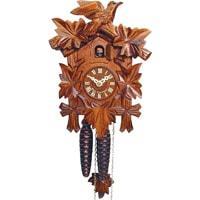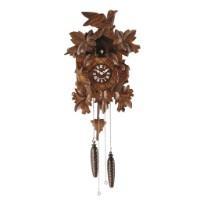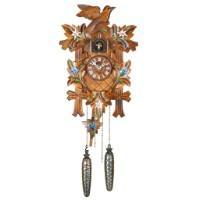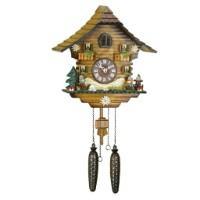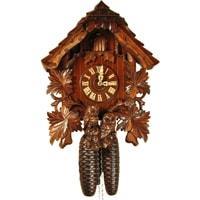
Clock Melodies: Chimes, Strikes and Bells
Westminster Chimes, also known as the Cambridge Quarters, from its place of origin, the church of St. Mary the Great in Cambridge, England. People commonly associate the Westminster Chimes with Big Ben at the House of Parliament in London.
Whittington Chimes are also called St. Mary's Chimes. There are four variations of this chime sequence. The tune originated with the bell tower of the church of St. Mary le Bow in London, England. In the 14th century, the chimes became famous through a legend that connects them with Dick Whittington.
St. Michael Chimes originated in the United States. The bells for this chime were originally cast in London for installation in St. Michael’s Church in Charleston, South Carolina.
Ave Maria Chimes are based on Franz Schubert's Ave Maria, which was inspired by the Sir Walter Scott poem "The Lady of the Lake." The composition came into usage as clock chimes in the 1940s.
Bim-Bam is a descriptive term for the two-note chimes which sound only at the half hour and hour. With most clocks, mechanically-driven hammers strike the two tuned chime rods to produce the distinctive tone.
Gong sounds the hours on a bell or gong. In 12-hour striking, used most commonly in striking clocks today, the clock strikes once at 1:00 A.M., twice at 2:00 A.M., continuing in this way up to twelve times at 12:00 P.M., then starts again, striking once at 1:00 P.M., twice at 2:00 P.M., up to twelve times at 12:00 A.M.
Cuckoo Clock entertains everyone with its unmistakable cuckoo call, said to bring luck. Traditionally, with cuckoo clocks, a gong is struck by a mechanical hammer. This adds depth of sound to the cuckoo call. If the hammer is too close to the gong, then the clock might produce a sick-sounding cuckoo.
Most clocks that have a chiming movement, (three winding holes) typically come with the Westminster Chime. However, some clocks have multiple tunes that are selectable. The most common combination on triple-chime clocks is Westminster, St. Michael's, and Whittington. There are variations of each chime so different clocks may play them differently.
Ship Bell Strikes are different from the other clock melodies. Unlike civil clock bells, the strikes of a ship's bell do not accord to the number of the hour. Instead, there are eight bells, one for each half-hour of a four-hour watch. In the age of sailing, watches were timed with a 30-minute hourglass. Bells would be struck every time the glass was turned, and in a pattern of pairs for easier counting, with any odd bells at the end of the sequence.
Here we've gathered a sampling of sounds in one place to make it easy for people to compare and contrast. While these sounds provide a good sense for the different chime melodies, please keep in mind that the clock you end up getting may have a slightly different tone than the one you hear here


